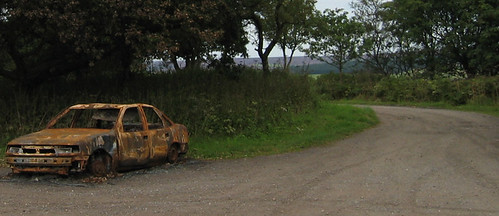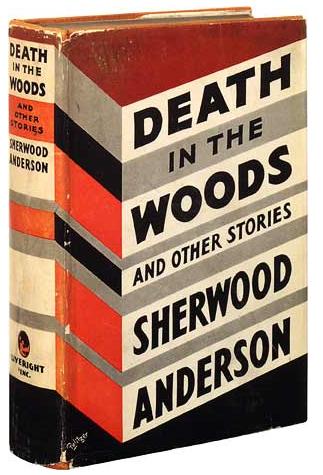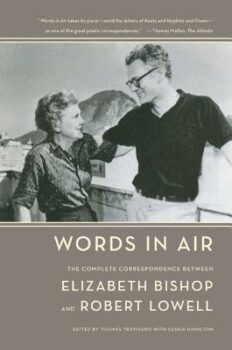Like many people, my desire to reinvent the workshop started with the very first workshop I was in.
This wasn’t because of the methods by which we discussed our stories, but rather, because of one story in particular that the professor, a very fine fiction writer, told at the beginning of class about his days as a graduate student.
He was assigned a composition class and told to do whatever he wanted, so he did. On the first day of the first fifty-minute class, he had everyone draw numbers out of a hat. Then he told them to go home and write five pages about something they loved. They sat there, blinking, and so he rewound back to the point where he told them to “go home,” and eventually they all did. There were approximately forty-five minutes left in class at this point and the room was empty.
You can see why this method already attracted me.
 But the real genius started at the second class meeting. He told everyone to sit in numerical order, and then asked them to come up one at a time with whatever they’d written. He then talked with each student privately for however long it took, going through their essays line by line. He’d arranged his office hours so that they fell immediately after class, and so he just worked straight through, until he’d seen all the students.
But the real genius started at the second class meeting. He told everyone to sit in numerical order, and then asked them to come up one at a time with whatever they’d written. He then talked with each student privately for however long it took, going through their essays line by line. He’d arranged his office hours so that they fell immediately after class, and so he just worked straight through, until he’d seen all the students.
This one-on-one method took longer, but only at first. The department’s requirements were that each student had to write five essays over the course of the semester. Some students, that first day, had produced an essay that was just fine. So he accepted it right then and there and sent them off with instructions to write essay number two. If they brought back that essay and it, too, was shipshape, he accepted it and sent them on to essay three—and four and five.
But wait, you ask—and they asked—what if a student wrote so well that they finished all their essays by the end of September?
Then they were done. Really: he sent those students away and told them never to return. They’d written their five essays, and they’d earned their final grade. And then he turned back to the ever-dwindling number of students in the class, and he continued to meet with them one-on-one, one by one, until they’d all written five satisfactory essays.
By November, it was just him and a handful of students—students who’d needed the most attention, students who were, by dint of this system, getting the most attention.
*
Now, as I said, this professor was—and is—a very fine fiction writer. He may very well have made up this entire pedagogical anecdote. But I’m a very fine fiction reader. Which is to say, I don’t care if he made it up: fiction, for me, has always possessed the greater share of truth.
 And the truth is, my own undergraduate creative writing workshop needed some reinventing a few semesters back. As I rummaged around for ideas, I thought back to his story of this magical composition class, and decided I liked the model. I then commenced to attempt the impossible: to create a structure that was just as smart he’d described, but which satisfied the dull demands of reality (and university administration).
And the truth is, my own undergraduate creative writing workshop needed some reinventing a few semesters back. As I rummaged around for ideas, I thought back to his story of this magical composition class, and decided I liked the model. I then commenced to attempt the impossible: to create a structure that was just as smart he’d described, but which satisfied the dull demands of reality (and university administration).
Our undergraduate creative writing program is an all-comers affair. If you enroll, you’re in, and if you don’t flunk out, you stay in (unless your parents insist you switch to the accounting). The result, of course, is that we get students of widely varying talents. And while our introductory suite of courses is supposed to sand off the rough edges, we nevertheless get students at the intermediate level (and beyond) who need different levels of attention. Some of that can be addressed in office hours, but it can be hard enough to get students to show up for class.
So I set up a new workshop model for my intermediate fiction writing class that was designed to give more critical review and writing time to students who needed it.
 In the past, I’d let the order of workshopping be dictated by the sophisticated means of…whoever was sitting to closest to me got to sign-up first. But this often meant that the last slots to be claimed were the earliest on the schedule, and often went to people who were rarely ready. Worse still were those people who wanted to go first, because they had 100 pages of vampiric zombie softcore ready to go, right now—in their backpack at that moment, in fact, did I want to take a look…?
In the past, I’d let the order of workshopping be dictated by the sophisticated means of…whoever was sitting to closest to me got to sign-up first. But this often meant that the last slots to be claimed were the earliest on the schedule, and often went to people who were rarely ready. Worse still were those people who wanted to go first, because they had 100 pages of vampiric zombie softcore ready to go, right now—in their backpack at that moment, in fact, did I want to take a look…?
No.
Instead, I swiped an old device from, appropriately, composition: a day one diagnostic writing exercise. After discussing some basics, I passed out a short-short story such as Tobias Wolff’s “Bullet in the Brain” or Grace Paley’s “Wants” and asked students to write a pastiche—just riff on it, I told them. Nothing more necessary than just a paragraph or two; as much as they could manage. I then asked them to expand on that writing as homework and e-mail the results to me, along with an answer to what I admittedly phrased as a leading question: “How much time will you need to prepare your first story for this class?” A lot, a little, none.
The next class, we workshopped these initial efforts in small groups and also discussed, in class as a whole, what sort of cues we took from the original text, thus completing a lesson in close reading alongside the writing exercise.
 Then I went home with all the writing samples I’d collected and sorted them, most promising to least. The most accomplished pieces earned their authors the earliest slots in the workshop schedule. The least accomplished pieces were scheduled the furthest out.
Then I went home with all the writing samples I’d collected and sorted them, most promising to least. The most accomplished pieces earned their authors the earliest slots in the workshop schedule. The least accomplished pieces were scheduled the furthest out.
Interestingly, my schedule almost always matched their requests—less confident writers who’d asked for more time really did need more time. And in those cases where a student’s plans and mine didn’t match, I wrote individual e-mails to them. “I know you’d asked for more time, but I think you have enough momentum here to go earlier.”
So one part was solved: the students who showed the greatest need were going to get the most lead time to produce their story. But I wanted them to use that lead time productively, which led to another change.
Rather than follow the usual format of assigning x number of students to a class period and discussing them for scrupulously equal amounts of time—indeed, I’m waiting for the creative writing conference pedagogy panel entitled, “Reinventing the Stopwatch: What to Do About Students Who Complain that Someone Else Got Four More Minutes”—I assigned only one student per class to have their full story workshopped. Three other students, meanwhile, were assigned to bring in only a story fragment, and we spent the balance of our time discussing them.
To review (since we’re talking pedagogy), the best students had their full pieces considered first. The students who needed the most work had portions of their stories, fragments—the beginnings—workshopped first. Students rotated through the fragment/mini-workshops repeatedly, until their full story was up for discussion. Then they dropped out of the mini-workshop rotation. By the end of the first half of the semester, the students who’d shown the least promise at the outset had their full stories workshopped—but only after we’d already discussed and helped them with their openings, their middle sections, and finally, their conclusions. Indeed, these mini-workshops became a space where the “teaching” of the class occurred, where we discussed the fundamentals of craft—not just how to structure a beginning, middle and end, but how to introduce characters, how to plot, and, most important, how to revise.
So what was the result of this workshop experiment?
 I love that line in John Gardner’s book On Becoming a Novelist where he talks about his novel workshop, how it ran them all ragged, how each student ended up dropping all their other classes, but how, in the end, eight of his ten students wound up publishing their novels.
I love that line in John Gardner’s book On Becoming a Novelist where he talks about his novel workshop, how it ran them all ragged, how each student ended up dropping all their other classes, but how, in the end, eight of his ten students wound up publishing their novels.
For my part, I’m happy to report that all sixteen of my students in that first reinvented workshop now support themselves solely through their writing, have movie deals—are married to movie stars, in fact—and, when voting in national or local elections, always consider how their ballots will impact funding for the arts.
What can I say? I’m a fiction writer, too.
The truth is, it did work, but it’s a work in progress. What worked is that the students who needed the most time to write their pieces got that time—and got that feedback.
Indeed, another challenge I’d had previously was that lower-performing students only got to be workshopped a handful of times. That is, they got workshopped the same number of times as everyone else, which wasn’t enough. They learned little about revision; it was easier for them to simply abandon a piece and move on.
Not in my new model, however: they learned what needed fixing and they fixed it. And if they fixed it wrong, they got a chance—and another, and another—to fix it again.
But, of course, there are those times when the best course is to abandon a piece and move on, and my new model doesn’t easily allow for that. The fragments that students workshopped were all supposed to be fragments from the same story. Ultimately, I did make exceptions—if someone wanted to “start over,” I let them, but it upset the equilibrium a bit.
There was also the matter of holding readers’ interest. While some of these pieces definitely did change over time, students were liable to lose interest in their role as critics if they felt a piece wasn’t changing enough—or, even if changed, wasn’t changed enough to engage them.
 The biggest challenge, though, was that this model made explicit what a lot of workshops leave implicit: some writers in this room…are better than the others. I never said that out loud, of course, and I was able to remind any students who raised the point that I’d asked them, after all, if they needed more time, and so the schedule was, in part, reacting to their own requests. But some students did chafe that they’d been asked to do more small pieces (and thus revise more) than other people. At the same time, it became obvious to all—even those students who remained the longest in the mini-workshop or fragment rounds—that they needed that feedback to be successful.
The biggest challenge, though, was that this model made explicit what a lot of workshops leave implicit: some writers in this room…are better than the others. I never said that out loud, of course, and I was able to remind any students who raised the point that I’d asked them, after all, if they needed more time, and so the schedule was, in part, reacting to their own requests. But some students did chafe that they’d been asked to do more small pieces (and thus revise more) than other people. At the same time, it became obvious to all—even those students who remained the longest in the mini-workshop or fragment rounds—that they needed that feedback to be successful.
Finally, although my critical antenna proved fairly well tuned, there were a few cases where I’d made the wrong call based on the day one writing diagnostic. The ranking, best to worst, wasn’t perfect. It was close, though.
Nevertheless, I’ve been working on refining this model (which I’ve been calling chiastic, after chiasmus, which is really just me chasing after a poetic term to describe this criss-cross approach; I’ll need to revise the name, too). I’ll stick with two rounds; in each round, each student will workshop at least one ‘full” story and multiple fragments as I described earlier, but I’ll play with the slots assignments a bit. The first part of the semester, I’ll assign randomly: who does a “full story” and who does a “story fragment” will be determined by chance. The second part of the semester, I’ll have them choose. And now that they know how it works, the ones who need extra time and feedback—which they know from their first round experience—should seek out those slots that allow them to have that additional feedback. The ones who need less will pick earlier slots.
We’ll see how it goes; I know it won’t go perfectly. But it will get some writers who need help, more help. That said, I don’t know that I would employ this for a more advanced class, and definitely not for a graduate class (unless my grad students read this and clamor for it). And my reinvention still doesn’t get me to the point where I’ve dismissed the majority of the class long before the semester’s end, and I spend those final weeks meeting with three or four students, each of us working out, with painstaking care, just where this word or that should go, all in the service of what we all acknowledge by then is a goal that glitters brighter because the path toward it stretched longer.
But then, that first workshop I took with that wonderful writer with his wonderful story of his 1970s do-it-my-way class, ended not with some similar grand revolutionary scheme for us in his 1990s graduate fiction workshop.
Rather he just surveyed the room after he finished his anecdote and asked, “So, who’s going first?”
Which is also a good method. I like to think that he was just acknowledging that the teaching side of this business can be a lot like the creative side: we’re just making it up as we go.
Further Links & Resources
- If you want to read the real experts on reinventing the workshop, I defer to my intrepid graduate students Chris Drew, Joe Rein and Dave Yost, who have gone and published an anthology on the subject — it’s truly terrific: Dispatches from the Classroom: Graduate Students on Creative Writing Pedagogy (Continuum, 2011).
- The John Gardner book I reference, On Becoming a Novelist, doesn’t get read as much as his Art of Fiction, but you can help right this wrong . The Raymond Carver foreword is worth a look alone.
- If you give me an hour, I could explain why “chiastic” is the perfect word for this method, but as you probably don’t have the time, I’ll refer you to the Poetry Foundation’s definition of chiasmus and let you mull from there.
- I live and write in Milwaukee and on the web at liamcallanan.com .








